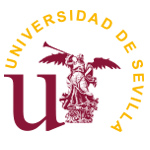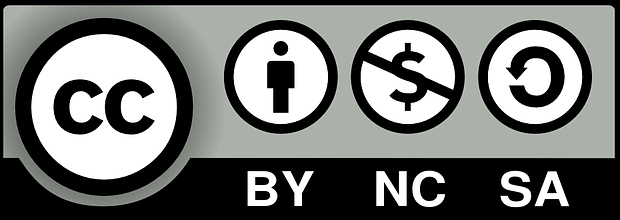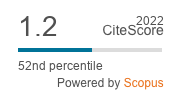Percepción de futuros maestros sobre el potencial de las Tic en la educación: de las expectativas a la realidad
Keywords:
Formación preparatoria de profesores, Investigación pedagógica, Docencia, TIC, actitudes, Nativos Digitales- Preservice teacher education, Educational research, Teaching profession, Teaching Practice, ICT, Attitudes, Digital NativesAbstract
Se presenta una investigación sobre el uso de las nuevas tecnologías por parte de estudiantes de magisterio (N = 158) del CES Cardenal Spínola CEU (centro adscrito a la Universidad de Sevilla) con una media de edad de 22 años y la percepción que tienen, como futuros docentes, sobre su potencial didáctico. Se ha utilizado como instrumento para la recogida de datos, un cuestionario que incluye algunos ítems en los que hay que indicar el posible uso de ciertos recursos y otros, tipo Likert, en los que se debe mostrar el grado de acuerdo con algunas afirmaciones. Los resultados indican que los estudiantes mantienen una actitud general favorable hacia las TIC, resultando usuarios habituales y confiados y mostrando una visión positiva, un tanto idealizada y, en cierto modo, alejada de lo que podría constituir un modelo crítico, y muy en la línea de ciertas corrientes de pensamiento en el campo de la tecnología educativa en los 80 y 90. Esta visión, sin embargo, no se plasma en sus actividades de programación didáctica, evidenciando una disonancia entre uso personal de las TIC y creencia sobre su valor en educación, por un lado, y su práctica pedagógica en formación por otro. El trabajo concluye con una propuesta de orientaciones sobre las actuales asignaturas de los planes de estudios de Grado.
Abstract
We present a research work on the use of new technologies by teacher trainees (N = 158) whose average age is 22 and who are studying at “Cardenal Spínola” Teacher Training College (attached to the University of Seville). We investigate their perception, as future teachers, about the didactic potential of ICT. As an instrument to collect data, we have used a questionnaire that includes some items in which they have to indicate the possible use of certain resources and others, of the Likert type, in which they must show their degree of agreement with certain statements. The results indicate that students maintain a general favorable attitude towards Information Technology, they are regular users, confident and show a positive view, a little idealized, and somewhat distant from what could be established as a critical model, and very much the same as certain lines of thinking in the field of educational technology in the 80s and 90s. This view, however, is not reflected in their activities on didactic programing, demonstrating disagreement between their personal use of information technology and beliefs about its value in education, on the one hand, and pedagogical practice in training on the other. The paper ends with a proposal of guidelines for the present subjects on the degree course.
Downloads
References
AIMC. (2011). Audiencia de Internet. abril-mayo. Recuperado de desde http://www.aimc.es/-Audiencia-de-Internet-en-el-EGM-.html. [Consultado el 18 de septiembre de 2011].
BENNET, S., MATON, K., y KERVIN, L. (2008). The ‘digital natives’ debate: A critical review of the evidence. British Journal of Educational Technology, 39 (5), 775-786.
BOSCHMAN, J. (2008). Generación Einstein. Barcelona: Gestión 2000.
BUCKINHAM, D. (2008). Más allá de la tecnología. Aprendizaje infantil en la era de la cultura digital. Buenos Aires: Manantial.
CABRA-TORRES, F. y MARCIALES-VIVAS, G. (2009). Mitos, realidades y preguntas de investigación sobre los nativos digitales: una revisión. Universitas Psychologica, 8 (2), 323-338. Recuperado de: http://revistas.javeriana.edu.co/index.php/revPsycho/article/view/476. [Consultado el 2 de marzo de 2011].
COOMBES, B. (2009). Generation Y: Are they really digital natives or more like digital refugees? Synergy, 7 (1), 31-40. Recuperado de: http://www.slav.schools.net.au/synergy/vol7num1/coombes.pdf [Consultado el 24 de abril de 2011].
GUTIÉRREZ, A., PALACIOS, A. y TORREGO, L. (2010). La formación de los futuros maestros y la integración de las TIC en la educación: anatomía de un desencuentro. Revista de Educación, 352. Recuperado de: http://www.revistaeducacion.educacion.es/re352/re352_TIC.pdf [Consultado el 24 de junio de 2011].
JONES, C., RAMANAU, R., CROSS, S.J., y HEALING, G. (2010). Net generation or digital natives: Is there a distinct new generation entering university? Computers & Education, 54 (3), 722-732.
HOWE, N. y STRAUSS, W. (2003). Millennials Rising: the great next generation. Nueva York: Vintage Books.
KENNEDY, G., JUDD, T.S., CHURCHWARD, A., GRAY, K. y KRAUSE, K. (2008), First year students' experiences with technology: Are they really digital natives? ‘Questioning the net generation: A collaborative project in Australian higher education’, Australasian Journal of Educational Technology, 24 (1), 108-122. Recuperado de: http://www.ascilite.org.au/ajet/ajet24/kennedy.html [Consultado el 15 de abril de 2011].
LIVINGSTONE, S. (2007). Los niños en Europa. Evaluación de los riesgos de Internet. Telos: Cuadernos de comunicación e innovación, 73, 52-69. Recuperado de: http://sociedadinformacion.fundacion. telefonica.com/telos/articulocuaderno.asp@idarticulo%3D2&rev%3D73.htm [Consultado el 21 de maro de 2011].
MONEREO, C., FUENTES, M. y SÁNCHEZ, S. (2000). Internet Search and Navigation Strategies Used by Experts and Beginners. Digital Education Review, 1. Recuperado de: http://greav.ub.edu/der/ index.php/der/article/view/27/114. [Consultado el 23 de enero de 2011].
OBLINGER, D. G. y OBLINGER, J. L. (eds.). (2005). Educating Net Generation. Boulder, CO: Educause. Recuperado de: http://net.educause.edu/ir/library/pdf/pub7101.pdf [Consultado el 25 de marzo de 2011].
PALFREY, J. y GASSER, U. Born Digital. (2008). Understanding the first generation of digital natives. Nueva York: Basic Books.
PÉREZ, F. y VÍLCHEZ, J. E. (2012). El uso de los videojuegos y redes sociales como predictores de la integración curricular de las TIC en estudiantes de Magisterio. Sphera Pública, 12, 199-215.
PRENSKY, M. (2001). Digital Natives, Digital Immigrants. On the Horizon. 9 (5). Recuperado de http://www.marcprensky.com/writing/prensky %20-%20digital%20natives,%20digital%20immigrants%20-%20 part1. pdf [Consultado el 23 de febrero de 2011].
PISCITELLI, A. (2009). Nativos digitales. Dieta cognitiva, inteligencia colectiva y arquitecturas de la participación. Buenos Aires: Santillana.
TAPSCOTT, D. (1998). Growing up digital: the Rise of the Net generation. Nueva York: MacGraw Hill.
TAPSCOTT, D. (2008). Grown up digital. How the Net Generation is Changing Your World. Nueva York: McGraw Hill.
SELWYN, N. (2009). "The digital native – myth and reality". Aslib Proceedings, 61 (4), 364 – 379. Recuperado de: http://www.scribd.com/doc/9775892/Digital-Native [Consultado el 8 de mayo de 2010].
WALRAVEN A. BRAND-GRUWEL, S. y BOSHUIZEN, H. (2008). Information-problem solving: A review of problems students encounter and instructional solutions. Computers in Human Behavior, 24 (3), 623-648.
Downloads
Published
How to Cite
Issue
Section
License
Authors who publish in this journal accept the following conditions:
Authors conserve the copyrights and cede to the journal the right for first publication, with the work registered with the attribution licence of Creative Commons, which allows third parties to use the published work as long as they mention the authorship and the first publication in this journal.
The authors may make other independent and additional contractual agreements for the non-exclusive distribution of the version of the article published in this journal (e.g. include it an institutional repository or publish it in a book) as long as it clearly indicates that the work was first published in this journal.
Authors are allowed and indeed recommended to publish their work on the internet (for example on institutional or personal pages) before and during the revision and publication process, because it can lead to productive exchanges and greater and faster dissemination of the published work (see The Effect of Open Access).
- Abstract 746
- PDF (Español (España)) 127










